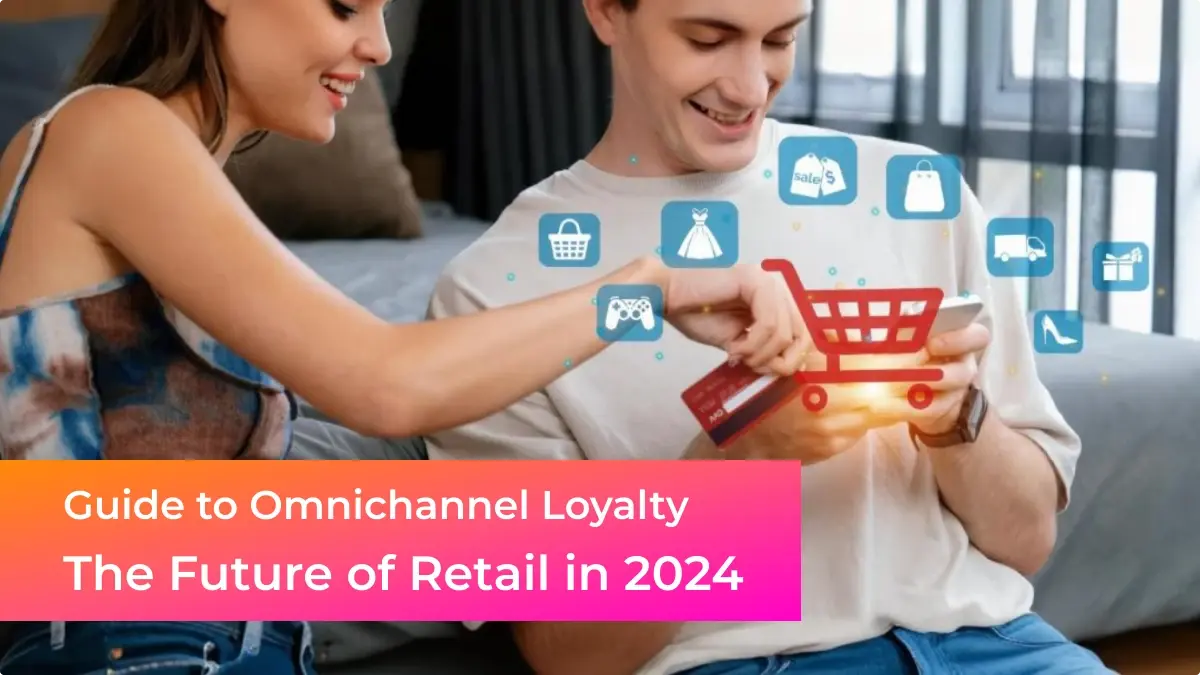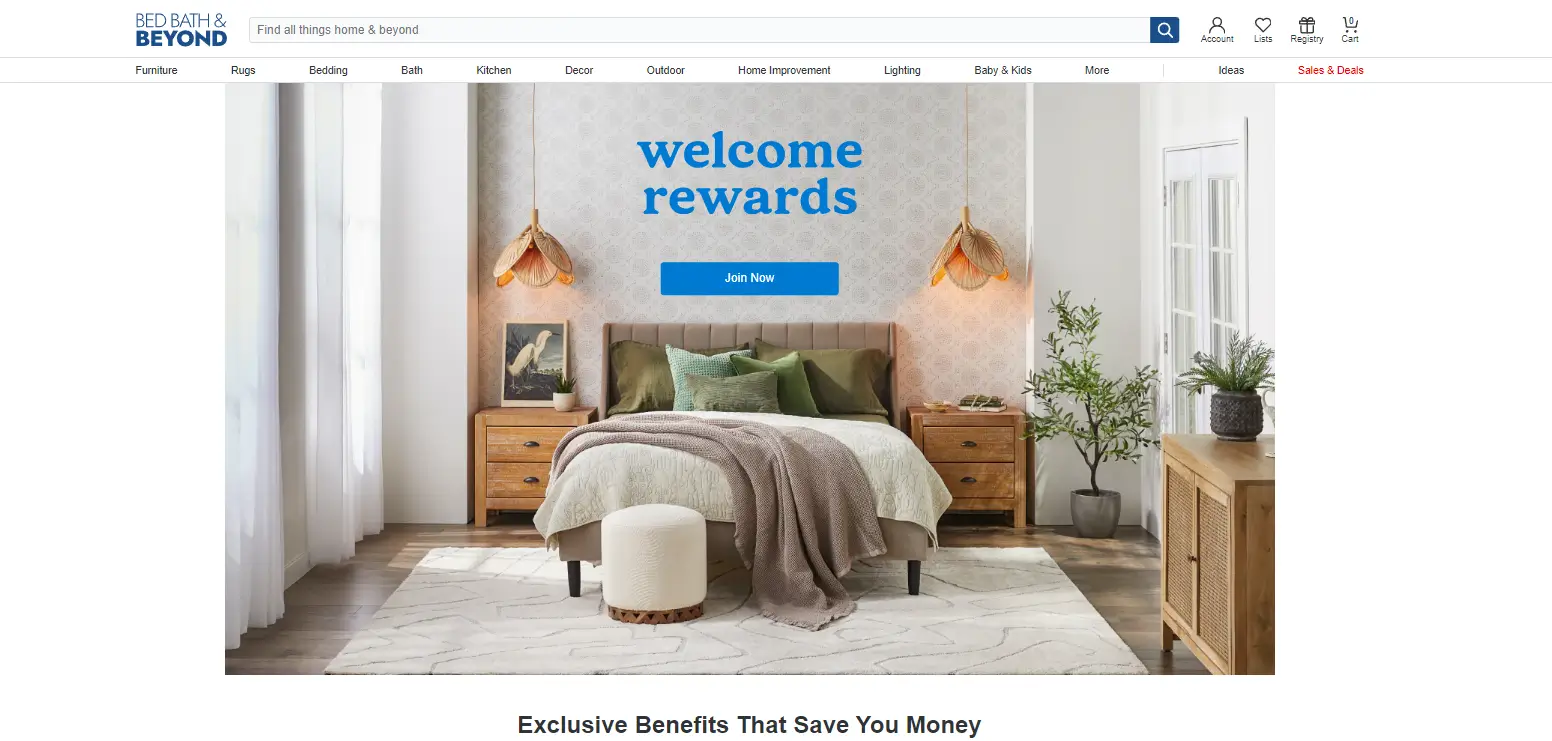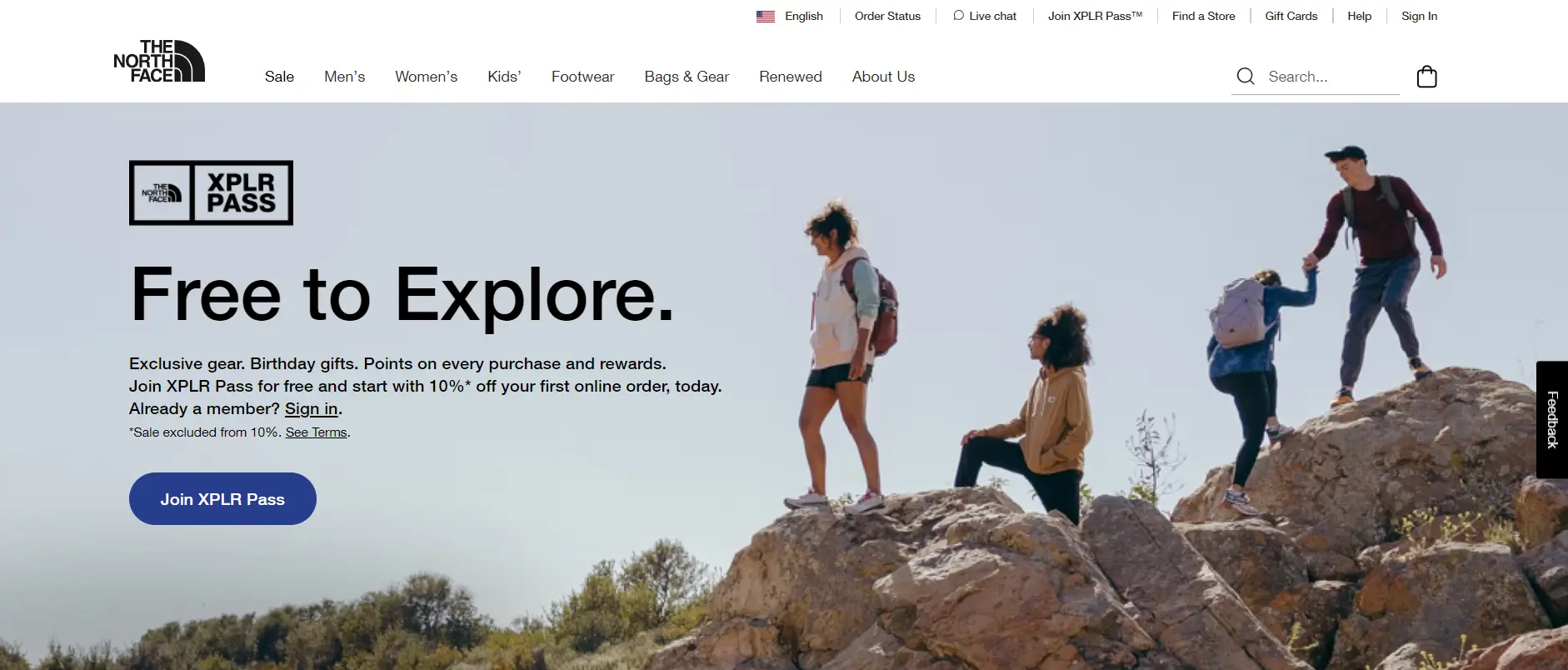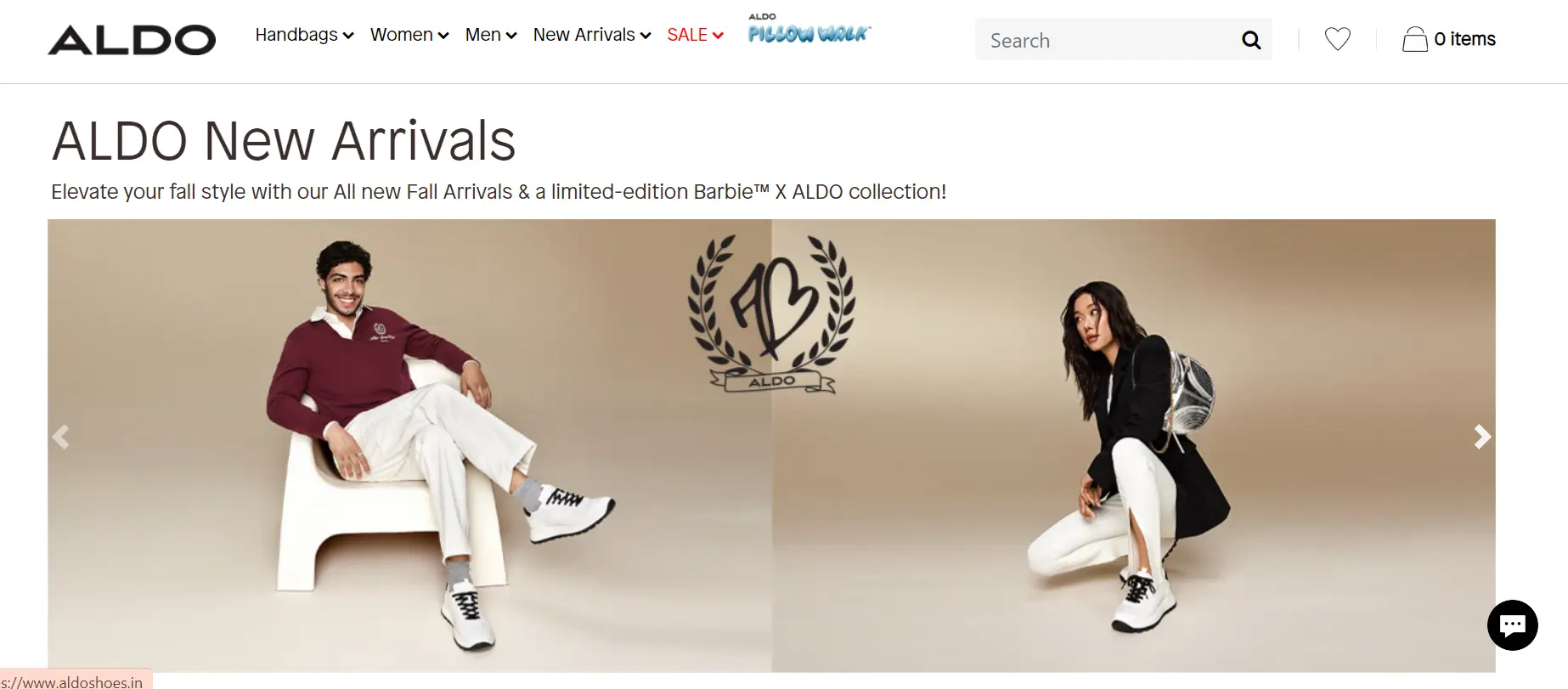
Piyush

The emergence of omnichannel loyalty Programs is transforming how brands connect with their customers, turning a multi-channel presence into a sophisticated, integrated strategy. As consumer behaviors change and expectations increase, providing a seamless, personalized shopping experience has become crucial.
A recent report by Harvard Business Review reveals that 73% of customers use multiple channels while shopping, switching between online and in-store interactions. This highlights a key reality: having separate channels is no longer sufficient. Retailers now need to concentrate on delivering a cohesive and immersive experience across all platforms to effectively engage and retain customers.
Omnichannel loyalty goes beyond simply linking different touchpoints; it involves creating a unified and personalized journey that meets the expectations of modern shoppers. In this guide, we will explore the fundamentals of omnichannel loyalty, discuss its benefits, and offer practical insights on developing a strong strategy that aligns with the demands of today’s retail environment. Learn how to utilize omnichannel loyalty to enhance customer interactions and cultivate lasting brand connections.
Table of Contents:
An omnichannel loyalty program engages customers through various marketing channels, such as offline, online, and mobile, utilizing technology. This approach builds customer loyalty by delivering a seamless shopping experience. According to McKinsey, consumers prefer to buy from retailers that provide comprehensive and satisfying experiences. Implementing predictive analytics in omnichannel loyalty programs can illustrate the potential results it can deliver.
Loyalty program customer insights will tell you the difference between the effectiveness of traditional and omnichannel loyalty programs.
| Traditional Loyalty Program | Omnichannel Loyalty Program |
|---|---|
|
|

Implementing an omnichannel loyalty program can transform how retailers engage with their customers, providing numerous benefits that drive business growth and customer satisfaction. Here are some of the key benefits:
One of the biggest advantages of omnichannel loyalty programs is that it gives you a 360-degree view of customer activity. It gives you a sneak peek into their buying frequency, shopping channels, purchasing habits, and so on. It gives you unified customer profiles that have information from your point of sale, CRM, app, or even from your loyalty program. Loyalty programs incentivize customers when they do certain tasks by offering them loyalty points for their actions. When they use their card, the customer profile gets updated with information about their recent activity.
If brands don’t use personalization in their marketing, they risk losing 38% of customers, according to Gartner. Businesses need to invest in data-driven marketing, and omnichannel loyalty programs collate data from multiple sources for marketers to leverage.
The job of an omnichannel loyalty program is not only to incentivize customers or increase sales but also to offer an opportunity to provide a terrific experience for your customers. You can track customer behavior, segregate them based on various demographic factors, and provide personalized content. The omnichannel loyalty program can be directed to different customers based on the kind of content that will make them buy from you again.
Having an omnichannel loyalty program has numerous benefits. According to Think With Google, businesses that offer omnichannel loyalty programs experience an 80% increase in incremental store visits. Additionally, a report by Omnisend indicates that brands using omnichannel loyalty programs have a 250% higher purchase frequency compared to those using single-channel programs. Furthermore, the same report states that customers in omnichannel loyalty programs have an average order value that is 13% higher per order.
One of the main goals of a loyalty program is to increase customer loyalty, and an omnichannel loyalty program helps achieve that objective. Omnichannel customers tend to be high-value customers who are willing to spend a significant amount and are more likely to recommend your business to others. 52.3% of customers who are loyal to a brand will join its loyalty program. Loyal customers are certainly worth the effort, don’t you think? a brand will join their loyalty program.
The fact that customers can make purchases from anywhere is what makes an omnichannel loyalty program extremely attractive. With an omnichannel loyalty program in place, you can offer seamless customer experiences. For example, Starbucks omnichannel loyalty program is built in such a way that customers can add credits to their phone and use them efficiently at any Starbucks store by using NFC technology.
Customers will be able to assign coupons to their card and activate them at the counter. Using NFC technology, customers can use phones inside the store to enroll in the loyalty program or participate in any gamified form of loyalty program.
Your omnichannel loyalty program can be a source of revenue. While this is the last thing in the minds of a brand when developing a loyalty program, when used in the right manner, this can also be a cashcow. 80% of millennials in a study said that they would be willing to join a paid royalty program if their favorite retailers offered them one. This statistic proves consumers are willing to pay for a loyalty program if it offers them the right benefits.
31% of consumers from the above report said that they haven’t joined a paid loyalty program because the retailers they frequent don’t offer them. If you are a retailer, why would you still want to wait?
The problem with traditional loyalty programs is that customers need to spend a lot to make a few points that are worth redeemable or to go to the next tier. This is where savvy retailers can swoop in and offer customers the right kind of incentives.
The key to an effective omnichannel loyalty program lies in having a central customer database that integrates information from various sources, including online purchases, in-store transactions, mobile app usage, and social media interactions, to create a unified customer profile. This comprehensive overview enables businesses to deliver more personalized and targeted communications to their customers.
Rewards should be easily accessible and redeemable across all channels. For example, a customer should be able to earn points from a purchase made online and redeem those points in-store. An integrated loyalty program system ensures that customers can engage with the loyalty program wherever they choose to interact with the brand.
Personalization is key to building strong customer relationships. Using data from various touchpoints, retailers can send targeted offers, recommendations, and updates that are relevant to each individual. Personalized communications enhance the customer experience and increase the likelihood of engagement.
For an omnichannel loyalty program to function effectively, it requires robust technology integration. This includes integrating point-of-sale (POS) systems, customer relationship management (CRM) tools, mobile apps, and e-commerce platforms. Seamless technology integration ensures that customer data flows smoothly across all channels, providing a consistent experience.
Real-time analytics allow retailers to track and measure the performance of their loyalty programs. By analyzing customer behavior and program engagement, retailers can make data-driven decisions to optimize their strategies. Insights gained from analytics can help in refining offers, improving customer segmentation, and enhancing overall program effectiveness.
Even though there are multiple benefits to creating an omnichannel loyalty program, it does come with its own challenges. Loyalty program retention tactics will bear fruit only when you can create an effective program. Let’s look at some of the challenges that it poses when creating a program.
Providing a consistent experience across several channels is a challenging task. It involves aligning and considering several processes to ensure that customers can redeem their rewards seamlessly across all channels. Each channel, whether it’s an online store, mobile app, or physical location, must offer the same level of service and ease of use. This requires comprehensive staff training, standardized processes, and robust technology to handle transactions uniformly across different platforms. Any inconsistency can lead to customer frustration and diminish the loyalty program’s effectiveness.
A successful omnichannel loyalty program requires the integration of multiple technologies, from in-store POS systems to CRM systems, all of which must work together seamlessly. This integration ensures that loyalty points can be tracked and redeemed regardless of the channel used. It demands significant investment in technology infrastructure and ongoing maintenance to keep systems updated and compatible. Furthermore, the technological ecosystem must be flexible enough to adapt to new channels or platforms as they emerge.
It’s essential to clearly map out customer journeys to ensure that loyalty rewards across different channels can be offered seamlessly. Understanding how customers engage with the brand through various channels is important for creating a loyalty program that improves their experience at every interaction point. This requires thorough analysis and visualization of customer journeys, as well as identifying crucial interaction points and potential obstacles. By doing this, businesses can develop customized rewards and incentives that promote repeated engagement and loyalty.
Identifying the right key performance indicators (KPIs) to measure the effectiveness of the omnichannel loyalty program is a challenging task. Traditional metrics may not adequately evaluate the impact of the program. Businesses need to consider a mix of quantitative and qualitative KPIs, such as customer lifetime value, repeat purchase rate, engagement levels, and customer satisfaction scores. These metrics should provide insights into both the financial performance of the loyalty program and its influence on customer behavior. Choosing the right KPIs helps in continuously refining the program and ensuring it meets its objectives.
Creating a successful omnichannel loyalty program requires careful planning and execution. By following these steps, retailers can develop a program that not only attracts customers but also keeps them engaged and loyal.
Before launching an omnichannel loyalty program, it’s essential to define your objectives. What do you want to achieve? Whether it’s increasing repeat purchases, boosting customer retention, or enhancing customer satisfaction, having clear goals will guide your strategy and help measure success.
To create a successful omnichannel loyalty program, you need to understand your customers’ preferences, behaviors, and pain points. Conduct customer research, analyze purchase history, and gather feedback to gain insights into what motivates your audience. This information will inform your loyalty program design and ensure it resonates with your target market.
Selecting the right technology partners is crucial for implementing an effective omnichannel loyalty program. Look for platforms that offer integration capabilities with your existing systems, such as CRM, POS, and e-commerce platforms. Additionally, ensure that the technology provides the features you need, such as real-time data synchronization and analytics.
Craft a reward structure that not only provides value to your customers but also aligns with your business objectives. Explore the use of different tiers, point systems, and a variety of rewards to incentivize customer engagement.
For an omnichannel loyalty program to be successful, your staff must be well-informed and trained. Provide training on how the loyalty program works, how to assist customers with rewards, and how to leverage customer data to enhance interactions. Well-trained staff will play a critical role in delivering a consistent and positive customer experience.
When launching your loyalty program, accompany it with a well-planned marketing campaign that effectively highlights its benefits. Utilize all available channels to promote the program and encourage customers to sign up and participate.
After the launch, continuously monitor the performance of your loyalty program. Track key metrics such as enrollment rates, redemption rates, and customer satisfaction. Use this data to make informed adjustments and optimizations to improve the program’s effectiveness and address any issues.
Their Beyond+ loyalty program is a paid annual membership which comes with a host of benefits. The members get 20% off on every order made via any channel. It also offers them free shipping and gives them access to exclusive offers and events.

The outdoor recreation products company is a great example when we talk about omnichannel loyalty programs. Its program is called XPLR Pass. Members earn points for every dollar that they spend online, in-app or at the store. Customers can even earn points for actions such as exploring monuments or national parks.

Their omnichannel loyalty program for Singapore is called Aldo A-List. Their fully customized loyalty program is available on web, mobile and in-store. It is a free program and you become a part of the program as soon as you buy something from them.
The program offers extra discounts on your birthday, there are welcome gifts, free store to door shipping, points for every $1 spent, and an exclusive member-only access to events and private sales. There are three tiers in the plan called A-list, A-list Black, and A-list Gold.

All the loyalty program technology trends indicate that customers want seamless experiences across all channels. They want to continue the same conversation across channels, whether it is on email or social media handles. With omnichannel, you can indulge in sustainable loyalty strategies that will give great results for businesses.
Data-driven loyalty programs consider customers’ preferred shopping channels, website behavior, purchasing frequency and history, demographics, firmographic factors, etc., to provide an enriching experience across all platforms. These programs encourage customers to share their data to receive loyalty points. When they use their card, a customer profile is created. Using this data, each customer can be provided personalized content based on what they want.
The main objective of an omnichannel program is to provide an excellent experience at every touchpoint. No matter where a customer engages with your brand, let it be mobile loyalty experiences in the app or a physical store, they expect a seamless interaction.
You can use gamification elements to capture the attention of customers. Using branded hashtags, contests, and so on, you can offer customers a chance to accumulate points to get great rewards.
Customer engagement in omnichannel is seamless across all touchpoints. Customers can easily swipe their loyalty card at the store or log in to the mobile app to gain access to their rewards. Retail loyalty program innovations in terms of technology like wireless e-tags, RFID, voice biometrics, shopping assistants, smart cards, etc., have changed the way loyalty programs work.
Customers who participate in a brand’s omnichannel loyalty programs are more likely to get personalized and interesting rewards. It provides seamless loyalty experiences with its data-driven methodology. For example, Baby Boomers(those born between 1946 and 1964) are the most financially stable customer demographic. You cannot depend on discounts alone to persuade them.
There has been a tectonic shift in customer loyalty in the omnichannel era. The objective is not just to make sales but to engage with customers at multiple touchpoints. Doing so will result in top-of-the-mind recall where customers will think about your brand at the first related instance. Omnichannel loyalty programs work towards deepening the customer-brand relationship. Personalized rewards and an engaged brand across multiple channels is a potent combination that builds great brands.
If you are looking for retail loyalty app recommendations to create an omnichannel loyalty program with the help of full-suite software, 99minds is the way to go. Get in touch with us to understand how the 99minds platform can change the way your loyalty program currently works. Let us help you create successful omnichannel loyalty case studies for your brand.